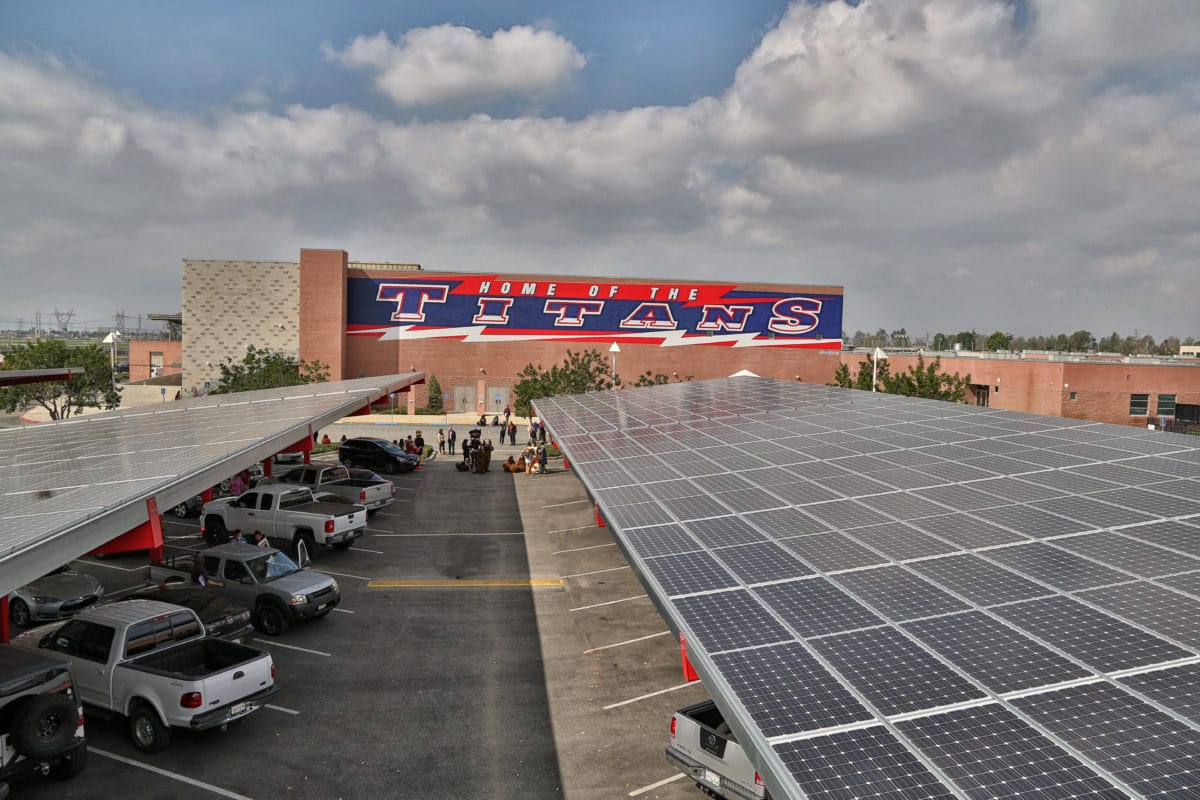More than 7,300 K-12 schools across the country now rely on solar energy to power their operations, according to a new report from nonprofit Generation180, the Solar Foundation and the Solar Energy Industries Association (SEIA).
That amount of schools that have installed and rely on solar is up roughly 24% since 2017 and 81% since 2014. The overall capacity of solar that has been installed on schools is up 139% since 2014. According to the report, roughly 5.5% of all elementary and secondary schools in the country use solar power.
Energy costs are the second largest expense for most schools. This reality, coupled with school district budgets getting tighter with each passing year (something that has been exacerbated by the pandemic), has caused many districts to consider solar as a means to shore up finances.
“As we think of ways we can rebuild better, helping schools make the switch to solar + storage can uplift our communities, drive our stalled economy, and insulate our schools from the effects of climate change,” said Abigail Ross Hopper, CEO of SEIA. “It’s rare to find a solution that can solve many challenges at once, and we hope Congress will recognize that solar can also play a vital role in our communities.”
The report finds that 79% of the solar installed on schools was financed by a third party. Likely, the majority of these projects are owned by the developer, who funds, builds, owns and maintains the system. In exchange, the school provides an area for that installation and pays for the energy produced by the system, usually at a lower rate than what the district paid the utility for electricity.
The savings that schools can see via a third-party ownership program really can’t be overstated. For example, Tucson Unified School District in Arizona expects to save $43 million over 20 years, and the Batesville School District in Arkansas used energy savings to become the highest-paying school district in the county, with teachers receiving up to $9,000 per year in raises.
This method allows schools to finance solar projects without having to make the large upfront investment that would otherwise make the system a financial challenge. Power purchase agreements are some of the most popular forms of third-parts ownership, though they are currently only available in 28 states and the District of Columbia.
Speaking of states, it should come as no surprise that California is the national leader in solar on schools, being home to a third of all solar-powered schools and to 45% of the installed capacity at 616 MW across more than 2,400 schools. California is followed by New Jersey, with 182 MW across 621 schools, Arizona, with 125 MW across 400 schools, and Massachusetts, with 71 MW across 292 schools.
In recent years, Indiana, Virginia and Illinois have made significant strides in both the number of schools that have gone solar and the amount of capacity installed on schools statewide. Indiana now has 41 MW, while Virginia and Illinois both have around 20. Illinois has made a real push for adoption, with 455 schools being home to a solar system, more than every state except for California and New Jersey.
Yet you can’t tell the whole story just by focusing on the number of solar schools or installed capacity. For some states, success is represented by the share of schools in-state that have gone solar. This metric is led by Hawaii at 29%, followed by Washington D.C. at 23% and Nevada at 20%. Only one U.S. state, South Dakota, has no solar schools.
This content is protected by copyright and may not be reused. If you want to cooperate with us and would like to reuse some of our content, please contact: editors@pv-magazine.com.









With Califonia”s PG&E charging 26 cents per kilo watt hour, anyone comming along and offering power at 18 cents per kilo watt hour, if they are allowed to cover your parking lot with solar, plus the cars staying cooler and dryer, it seem a no brainer for the school district and the developer who produces the power, at under 8 cents per kilo watt hour after construction costs are pro-rated over 25 years, makes a reasonablle long term profit. However, In Las Cruces, New mexico where El Paso Power only charges 8 cents per kilo watt hour, it is a harder sell.